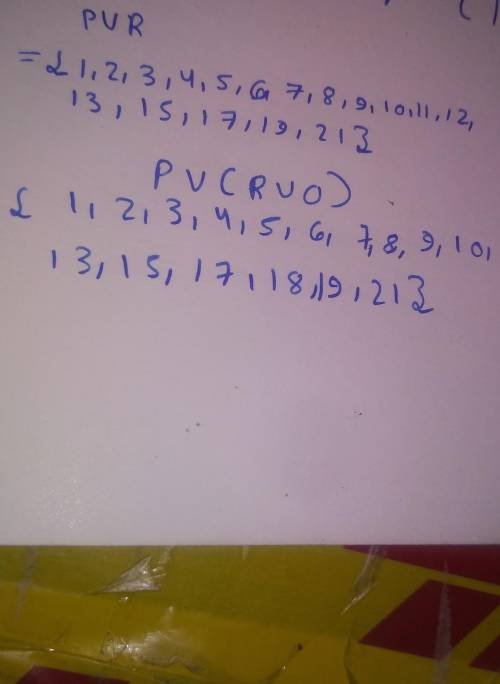Find the following then use diagram to illustrate each
1. P ∪ R
P = { 1,3,5,7,9,11,13...21...

Mathematics, 07.09.2021 14:00 shradhwaip2426
Find the following then use diagram to illustrate each
1. P ∪ R
P = { 1,3,5,7,9,11,13...21 }
R = { 2,4,6,8,10,12 }
2. P ∪ ( R ∪ O )
P = { 1,3,5,7,9,11,13...21 }
R = { 2,4,6,8,10,12 }
O = { 3, 6, 9, 12, 15, 18 }
3. ( O ∩ V ) ∩ E
O = { 3, 6, 9, 12, 15, 18 }
V = { 4,16,20 }
E = { 5, 10, 15, 20 }
thank you

Answers: 3


Other questions on the subject: Mathematics

Mathematics, 21.06.2019 18:00, purplefish53
Jose predicted that he would sell 48 umbrellas. he actually sold 72 umbrellas. what are the values of a and b in the table below? round to the nearest tenth if necessary
Answers: 2


Mathematics, 21.06.2019 19:40, evarod
Afactory makes propeller drive shafts for ships. a quality assurance engineer at the factory needs to estimate the true mean length of the shafts. she randomly selects four drive shafts made at the factory, measures their lengths, and finds their sample mean to be 1000 mm. the lengths are known to follow a normal distribution whose standard deviation is 2 mm. calculate a 95% confidence interval for the true mean length of the shafts. input your answers for the margin of error, lower bound, and upper bound.
Answers: 3

Mathematics, 21.06.2019 21:00, palomaresmitchelle
Which expression is equal to (21)(7)(3x) using the associative property? (21 · 7 · 3)x (7)(21)(3x) 32(7 + 3x) (3x)(7)(21)
Answers: 2
You know the right answer?
Questions in other subjects:




Physics, 19.07.2019 05:30

History, 19.07.2019 05:30



Mathematics, 19.07.2019 05:30


English, 19.07.2019 05:30




